 Topics Topics |
|
|
|
 Species Species |
|
|
|
|
|
Uvalde center, producer team up to prove artichokes a viable alternative crop for Lone Star State
Brownsville, Texas, USA
April 4, 2013
It was cool and overcast during the recent harvest of a 12-acre field of artichokes being grown by MO Produce LLC in Rancho Viejo, near Brownsville.
As the workers methodically harvested the fist-size globes from the tops of plants, Mike Ortiz, one of the operation’s owners, oversaw the harvest and inspected the rest of the crop.
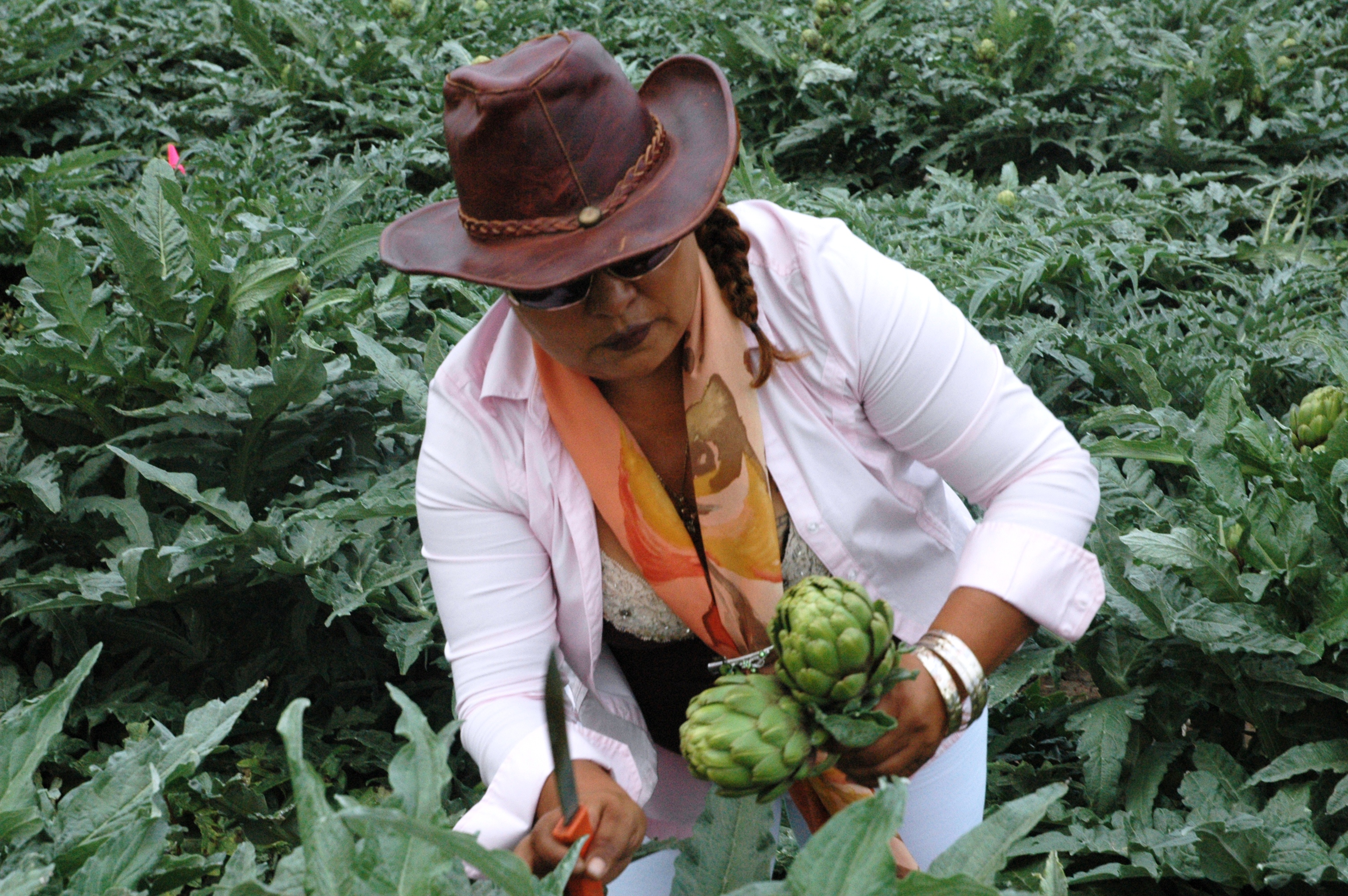
A worker harvests artichokes grown by MO Produce LLC in Rancho Viejo. The grower has been successfully producing artichokes in the Rio Grande Valley for the past five years.
(Texas A&M AgriLife Extension Service photo)
“This is our fifth year for growing artichokes here in the Rio Grande Valley and we’ve had good success with them so far, especially with help from the Texas A&M Research and Extension Center in Uvalde,” said Ortiz, who has a bachelor’s degree in agricultural development from Texas A&M University.
While more than 95 percent of U.S. artichoke production is currently in California, Ortiz and his business partner, Jed Murray, himself a California ‘transplant’ to the Lower Rio Grande Valley, have been giving the artichoke a home where the armadillo and roadrunner roam.
“There is currently some fledgling commercial production in the Rio Grande Valley and Winter Garden area, with additional small-scale production in the Hill Country and in the Austin and Dallas area,” said Dr. Daniel Leskovar, Texas A&M AgriLife Research vegetable physiologist and Uvalde center director. “There are also many home gardeners throughout the state who grow artichokes in small veggie garden plots. But the artichoke as a commercial crop is still a relative newcomer to Texas.”
Since 2007, Ortiz and Murray have been consulting with Leskovar on various aspects of artichoke production. He and his fellow researchers have provided them research-based information and assistance on variety selection, transplantation, irrigation and various production methods so they might produce artichokes that will meet or exceed consumer expectations.
“From a production standpoint, artichokes are a reasonably low-maintenance crop,” Ortiz said. “In general, they require about the same amount of effort as say cabbage or onions. Plus, they have a much better profit potential than most of the traditional crops produced in the Valley.”
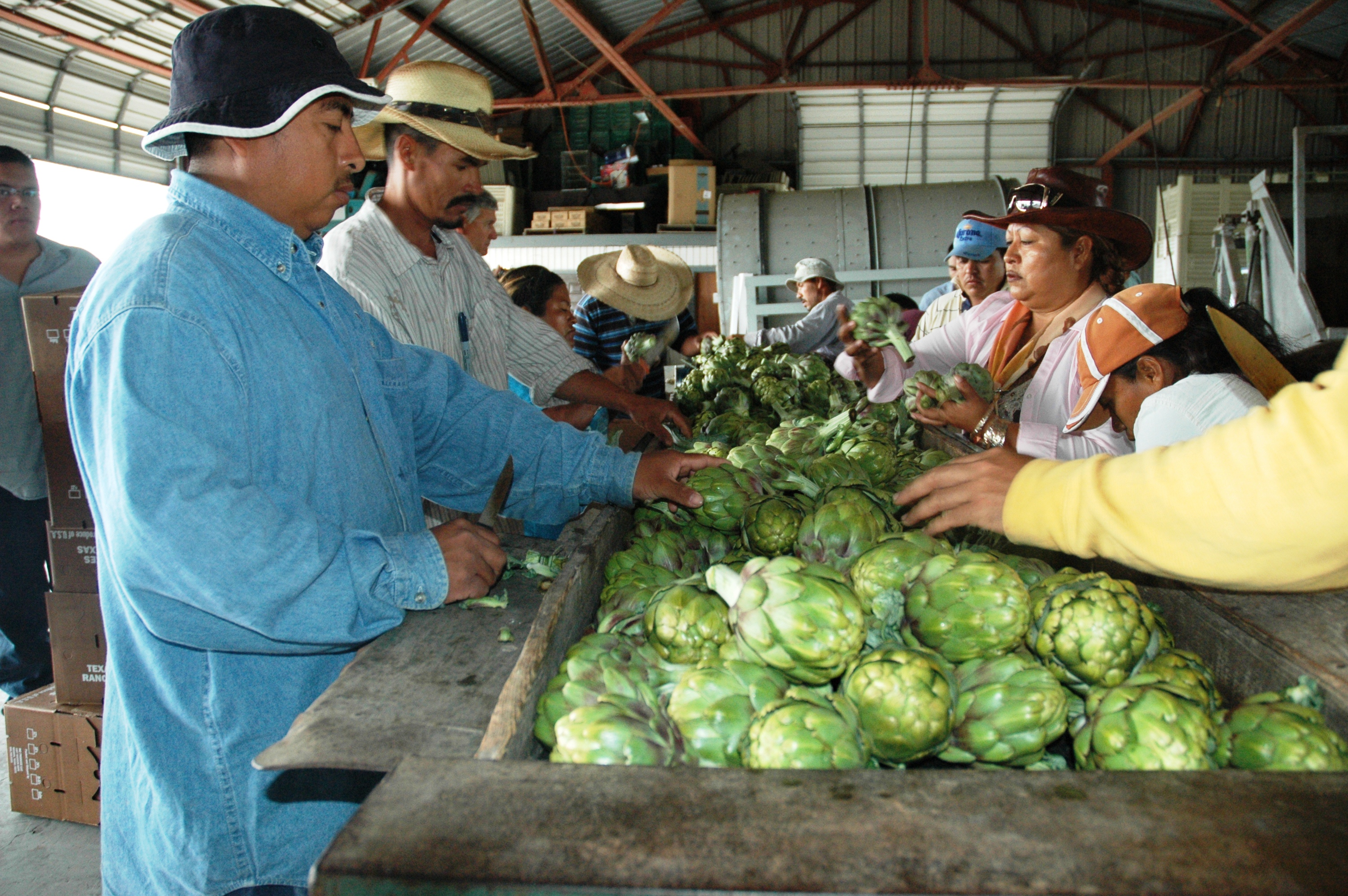
Workers at the MO Produce processing facility prepare artichokes for shipping. (Texas A&M AgriLife Extension service photo)
Murray, who also is president of the Texas Vegetable Association headquartered in nearby Mission, said customer feedback proves the operation is headed in the right direction.
“Our customers tell us they like the freshness, the nutty flavor and the big heart of the artichokes we grow here,” Murray said. “We frequently get compliments and expressions of gratitude from them.”
Murray said part of their marketing strategy is to introduce artichokes to audiences that don’t have a tradition of using them as ingredients in their recipes and to alert them to their many healthful qualities.
“Once they get a taste and realize how good they are, plus realize their exceptional nutritional value, they’ll want to add them to their weekly shopping list,” he said.
Both Murray and Ortiz practice what they preach, frequently cooking artichokes for their own families, which include a total of seven children.
“We make cooking artichokes a kind of family activity at my house,” Ortiz said. “I’ll parboil them in a little water and oil, plus some salt and a few spices, then put them on the grill. The kids actually fight over who gets served first.”
Otriz added that his 97-year-old Spanish grandfather who lives nearby grew up in the tradition of eating artichokes as a part of his normal diet.
“I guess you could say he’s living proof they’re good for you,” Ortiz said jokingly.
It’s not just Rio Grande Valley-area consumers who are delighted with their artichokes, Murray said. MO Produce can now count Whole Foods, as well as another Texas-based supermarket chain, among its artichoke fan — and customer – base.
“We’re excited that we can produce a fresh, flavorful, local product that is both healthy and nutritious,” Murray said. “We also strive to leave a small carbon footprint from our production and transportation.”
Artichokes are a key food in the Mediterranean diet, which has been scientifically proven to have exceptional health benefits, said Dr. Sharon Robinson, Texas A&M AgriLife Extension Service nutrition specialist in College Station.
“They are high in dietary fiber and low in calories, plus they’re rich in antioxidants and potassium,” Robinson said.
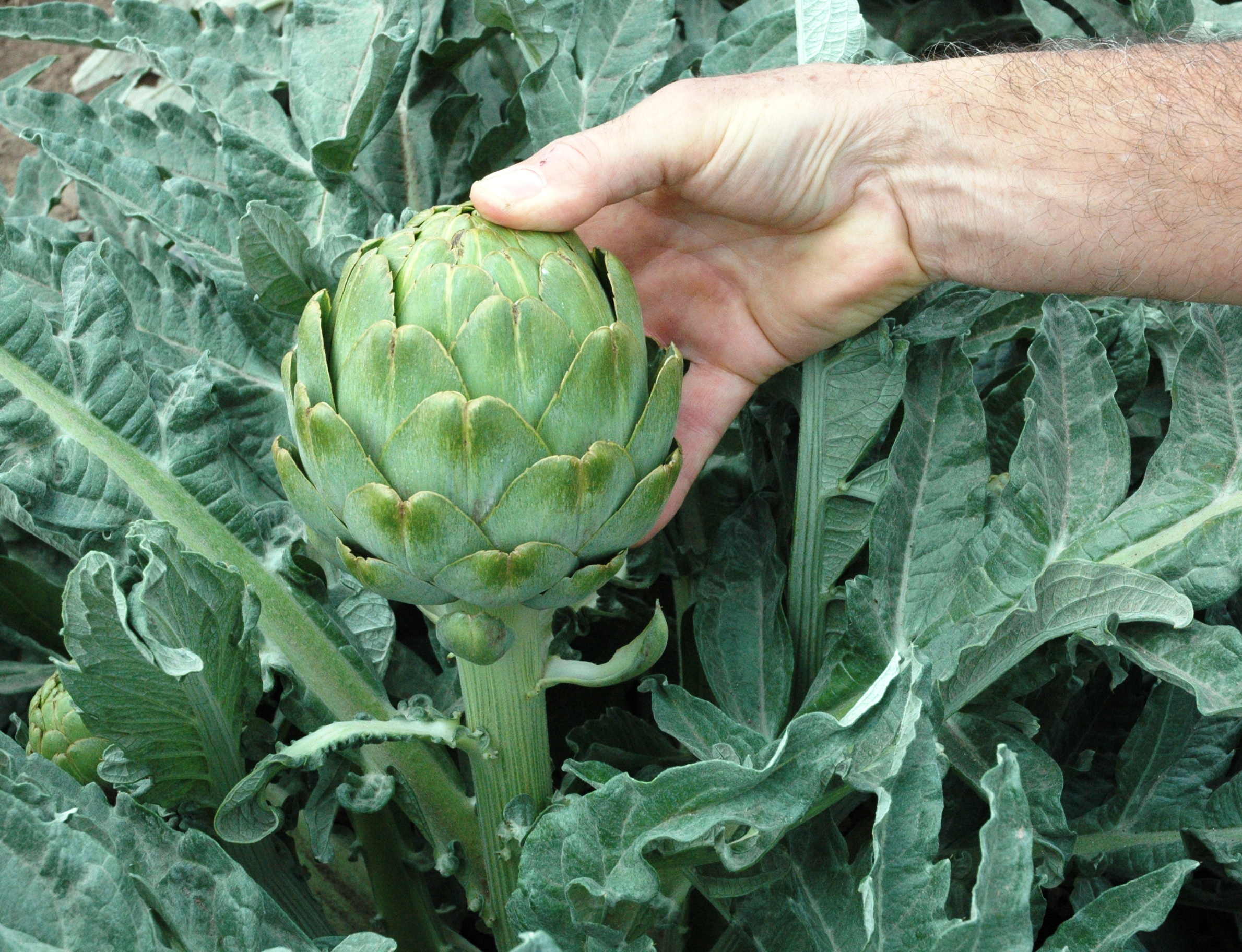
Nutrition research shows that in addition to being an excellent source of dietary fiber, artichokes contain high levels of antioxidants and potassium. They are a staple of the Mediterranean diet, noted for its health benefits. (Texas A&M AgriLife Research photo)
She noted that a recently completed 5-year study in Spain showed participants with heart-risk health issues following a Mediterranean-type diet had a 30 percent lower combined rate of heart attack, stroke and death from related causes than those following a typical low-fat diet.
Celebrity chef Jesse Griffiths, owner of Dai Due Butcher Shop and Supper Club in Austin, is another fan of artichokes, especially Texas artichokes. According to the Austin Food and Wine Alliance, Griffiths uses locally-grown vegetables, meats and dairy products in his recipes, focusing on “traditional, local and sustainable foods.”
“I’ve been buying artichokes from Mike and Jed for three or four years now and they have always been very high quality,” Griffiths said. “I would describe them as sweet with a nut-like or slightly ‘woody’ taste and excellent texture. I enjoy using them in my dishes and look forward to the times when they’re available to me.”
Murray said while most of their business outside the Rio Grande Valley currently comes from the Austin area, they are hoping to also break into the San Antonio, Houston and Dallas markets. They are also assessing the possibility of organic artichoke production.
“Our research on artichoke production, which began in 2005 at the Uvalde center and in conjunction with the Food for Health Program, has shown the artichoke to be a viable alternative crop for many areas of the state,” Leskovar said. “We have studied crop yield, quality and nutritional aspects of several different varieties of artichoke in relation to different irrigation regimes and nitrogen fertilization rates. We also focused on water-use rates as this region is water-limited and prone to drought, as well as on the heat tolerance of artichoke varieties.”

Dr. Leskovar examines artichoke plants near a lysimeter — an instrument he is using to help determine soil moisture and the rate of evapotranspiration, or ET, for artichoke varieties being used in field trials at the Texas A&M AgriLife Research and Extension Center in Uvalde.
(Texas A&M AgriLife Research photo)
Leskovar said center research is also investigating how to extend the spring growing season so operations can take advantage of the higher off-season prices.
In Texas, he said, artichokes are grown as annuals or possibly bi-annuals where re-sprouting is possible. Seedlings are raised in greenhouses in South Texas, and are transplanted into the field during the fall and harvested in the spring. There is also a niche market for the flower produced by the artichoke plant.
“Development of year-round management strategies focused on producing artichoke heads in the spring and fall in areas of the state will give producers with a positive market opportunity to sell their product at the best possible price.
“There’s a lot of additional potential for artichoke production in other regions of Texas, but it will take additional research, as well as the necessary funding to support that research and various practical aspects of production, to realize that potential.”
Leskovar said the nutritional value to the consumer and profit potential to the producer make the artichoke a stand-out alternative crop for many parts of the state. And soon, Leskovar and AgriLife Extension agricultural economist Dr. Marco Palma, College Station, will conduct a consumer preference study using fresh-market artichokes from MO Produce in comparison with other fresh-market and processed artichokes.
“We are continuing our artichoke research at the Uvalde center with partial funding from the Texas Department of Agriculture. Early indications of new field variety trials are showing good commercial potential for early and late variety selections with traditional green heads and also red to maroon color heads,” he said. “These too may provide some more interesting opportunities for Texas producers.”
Leskovar cited the success of MO Produce in artichoke production as an excellent example of how research-based knowledge and technical assistance can be applied to practical agricultural production to benefit both the producer and consumer.
More news from: Texas A&M AgriLife
Website: http://agrilife.org/ Published: April 4, 2013 |
|
|
|
Better Food Venture's
AgTech Landscape 2019

|
| |
|
2019 THRIVE Top 50
landscape map

|
| |
|
Concentration in Seed Markets - Potential Effects and Policy Responses
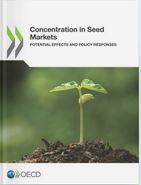
(OECD December 2018)
|
|
Visualizing Consolidation
in the Global Seed Industry
1996–2018
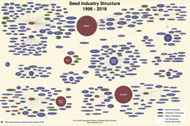
Seed Industry Structure
1996-2018
Phil Howard
Associate Professor
Michigan State University
|
|
2017 Seed Company Family Tree
Ccreated Septebmer 2017
by Robert Walsh
WaSoo Farm, Elk Point, South Dakota |
 |
Syngenta Brands Family Tree
Ccreated January 2017 by Robert Walsh, WaSoo Farm, Elk Point, South Dakota
|
 |
| |
Rabobank's
World Vegetable Map 2018 |
 |
|
|